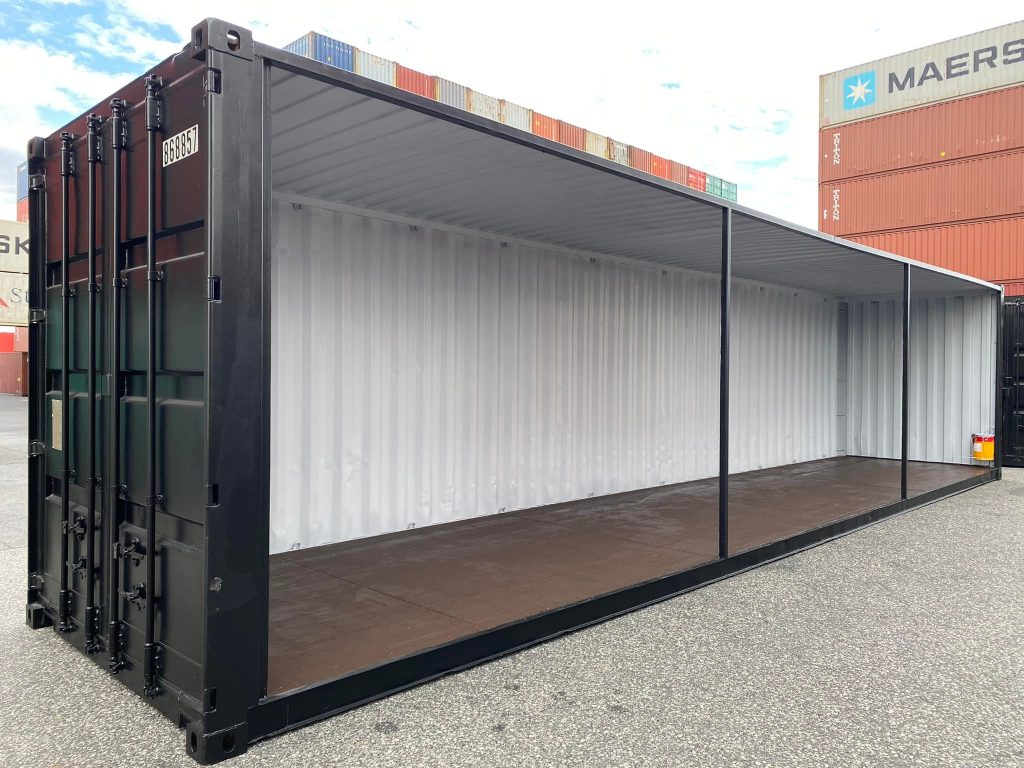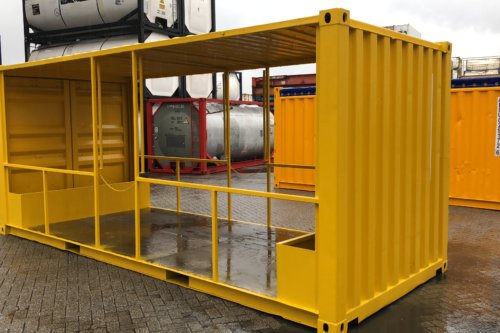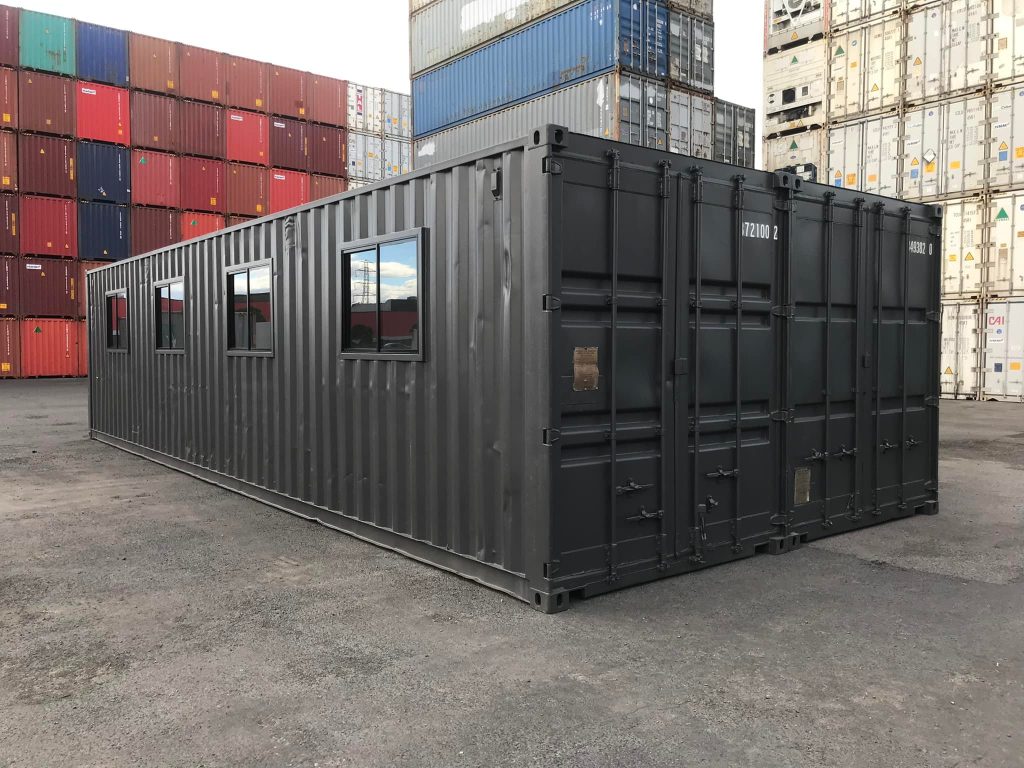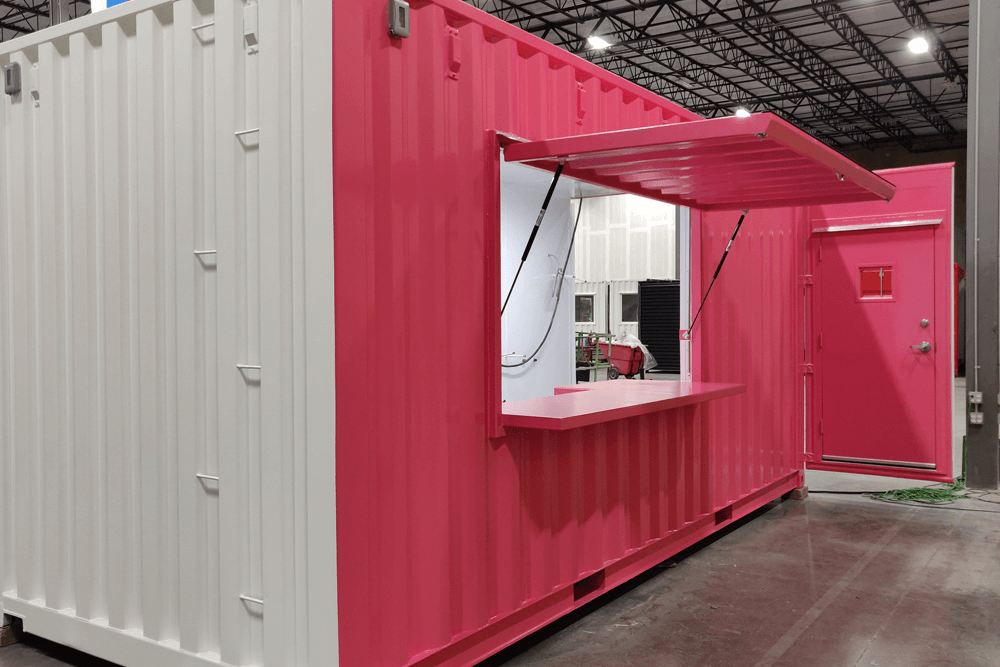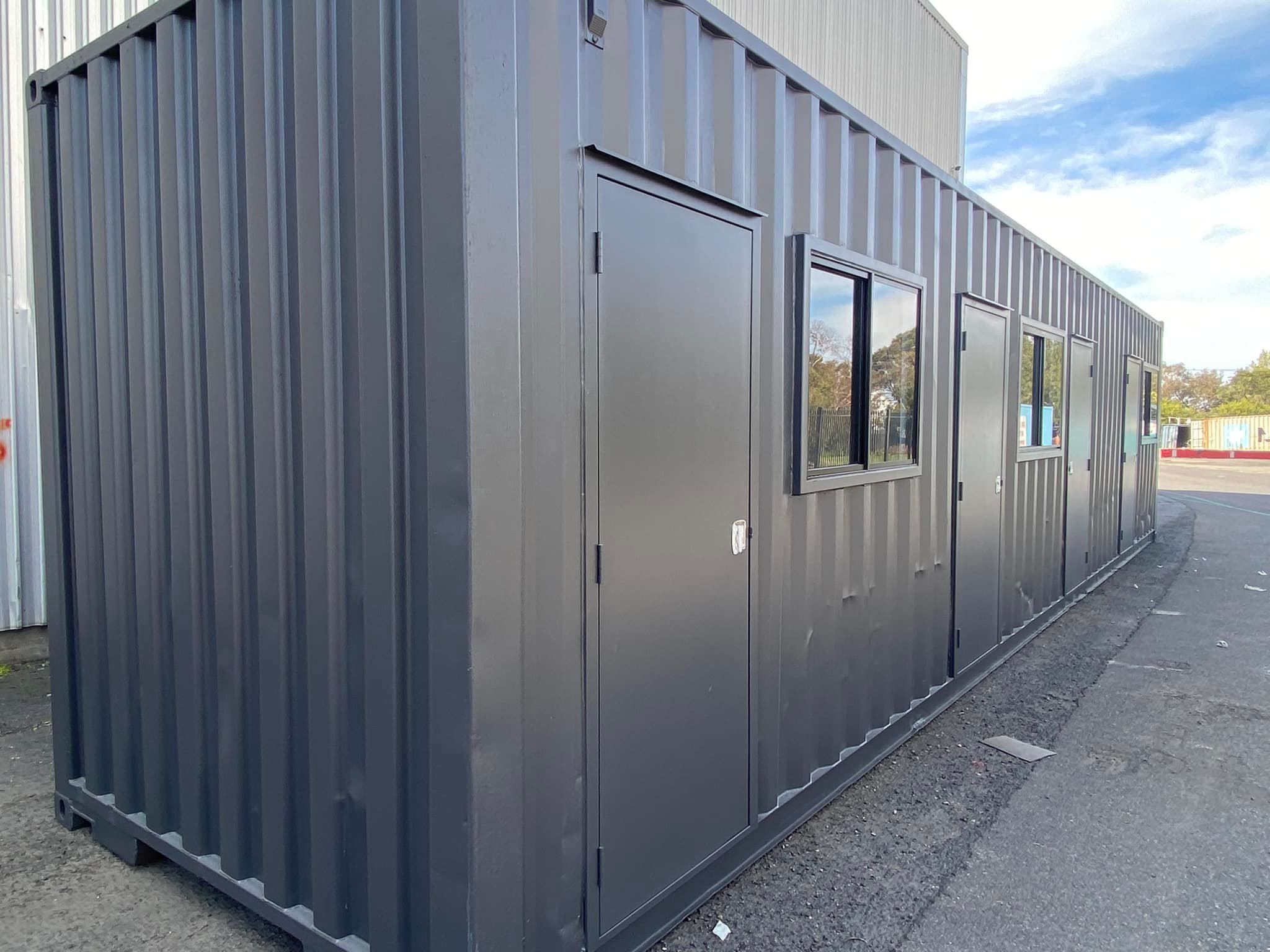One of the best things about converting a shipping container house or commercial space is the endless opportunities for customization. Unlike an older home or building, you’re not bound by the limitations of design or layout. And compared to a custom build using conventional construction techniques, the savings afforded by going modular give you more room to spend on upgraded appliances and other premium components.
Here are just a few of the choices our customers have when ordering and customizing their shipping container building:
- Shipping Container Colors: Shipping container buildings already have a distinctive exterior look. A limitless pallet of colors accentuates this uniqueness and allows you to put your own personal spin on your building. Choose a lighter color to reflect the sun’s heat and make your property seem larger. You could also select a darker color for a more imposing look — or throw out the rulebook altogether to mix and match colors as you see fit.
- Shipping Container Doors: Shipping containers can be modified with a wide range of door options depending on your needs and your budget. Choose from conventional insulated metal doors or add an aluminum/glass sliding storefront entryway for additional convenience and elegance. When it comes to adding or modifying the doors on a shipping container structure, there are very few practical limitations to worry about.
- Shipping Container Windows: A bright, sunny space is one of the most desired characteristics of a home or office. Shipping container buildings afford you great flexibility to capture the most sunlight. In a shipping container, adding additional windows is easier than with conventional housing. Multiple size and shape options are also available, as are high-efficiency windows that provide a tighter seal and keep your utility bills low.
- Shipping Container Flooring: Shipping containers come with marine-grade plywood flooring which can be polished or cleaned up as necessary. Many customers prefer the rough look and feel this offers. Alternatively, we can add tile, laminate, hardwood or several other types of conventional flooring.
- Shipping Container Roofing: A shipping container roof presents a number of opportunities for upgrading. For additional ventilation, add a vent or turbine that lets air in. For a brighter, lighter space, add a flat or domed skylight — you’ll also save on your heating and lighting bills.
- Shipping Container Locks & Security: A container building can be equipped with all the same security features as a conventional home or office. Door locks are standard, though it’s also possible to add sophisticated modern security features such as video surveillance, access control systems and intrusion detection alarms.
- Shipping Container Electricity: All shipping container buildings can be wired for electricity as well as phone, internet, cable and all other amenities available in your area. Shipping containers provide an ideal platform for solar conversions as well, whether you want to go off the grid entirely or simply heat your water and offset your monthly energy usage.
- Shipping Container Plumbing: There’s no reason why a shipping container building can’t be outfitted with a full modern bathroom or kitchen. In fact, one of the reasons why shipping containers make a great choice for restaurants is that they can easily be modified with additional sinks, washbasins and other necessities for cooking and cleaning.
- Shipping Container Heating and Air Conditioning: Complete climate control solutions are available on any shipping container building. Both wall-mounted and ducted AC systems can be installed, as can high-efficiency electrical heating and hot water units. Roof mounting a compressor or HVAC unit is a great option for saving space on your property.
- Shipping Container Insulation: Insulating your space keeps it warmer in the winter, cooler in the summer and quieter and more comfortable all year round. Several insulation options are available for shipping container homes and office buildings, including closed cell spray foam that can help you earn LEED certification or credits.
- Shipping Container Lighting: When you’re looking at lighting for your shipping container building, you can choose from a wide variety of options — from conventional ceiling fixtures to stylish recessed lighting, there will likely be a lighting system that will fit your style and tastes.
- Shipping Container Accessibility: The design flexibility of shipping container buildings allows for more organic integration of accessibility features such as ramps and loading zones. We’ll work with you to ensure any commercial property meets or exceeds ADA and related guidelines.
The greatest opportunities for modifying a shipping container building come by modifying the containers themselves. Individual units can be stacked side by side to create a great, open concept space, or they can be placed one of top of the other for multi-story convenience in a smaller lot.
There is no limit to the amount of potential combinations. You even have the option of building your dream space slowly over time — the beauty of modular construction is that expanding your space doesn’t require tearing down what you’ve built already. Additionally, a fast and easy build process ensures renovations don’t significantly disrupt your life or your business, either.

